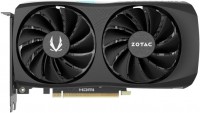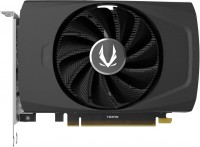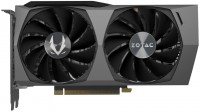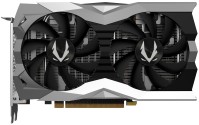Graphics Cards ZOTAC series Solo (1 fan)
prices on 1 modelZOTAC Solo
The Solo line includes relatively simple video cards with an affordable price tag and minimal overclocking. Due to limitations in the length and power of the power subsystem, ZOTAC selects NVIDIA GPUs of the initial and semi-middle level of the past and current generation (GTX 1660, RTX 2050, RTX 3050, etc.). The massive board of the conditional RTX 4070 does not fall under these requirements from the word at all, so such options are not found here. In general, all ZOTAC Solo models feel good when playing in Full HD resolution, but do not pull out the requirements of 2K and 4K monitors.
 |
A typical representative of the Solo series stands out from similar GPUs due to a shortened printed circuit board no more than 17 cm long and no more than two slots thick. The area of the printed circuit board is usually much smaller than that of full-fledged models with the same video core. All of them are equipped with a thick aluminium radiator and a plastic casing, without additional lighting. Cooling systems are reliable, but not designed for overclocking and can be noticeably noisy under high loads. These are the features of the compact format, other manufacturers have the same story.
An excellent illustration of this series is the compact RTX 3050 Solo: its length is almost a quarter shorter than the reference board, the core and memory are slightly overclocked out of the box, and the single cooler supports silent operation. It confidently copes with the requirements of most gaming blockbusters of recent years, delivering an average of 50 to 80 FPS in Forspoken, Elden Ring, Hogwarts Legacy and A Plague Tale: Requiem at 1080p resolution with high graphics settings. Like the older NVIDIA RTX 40XX models, it supports hardware ray tracing and DLSS artificial scaling. However, it has more modest overclocking capabilities and lower power consumption.






